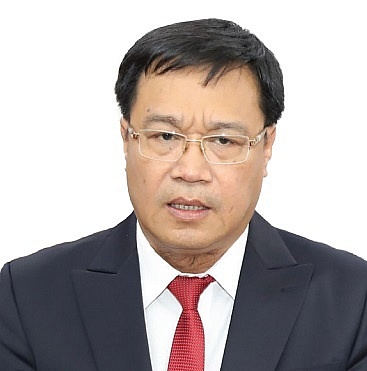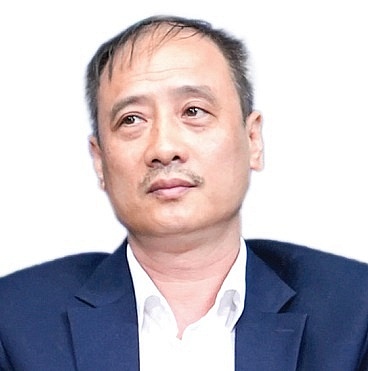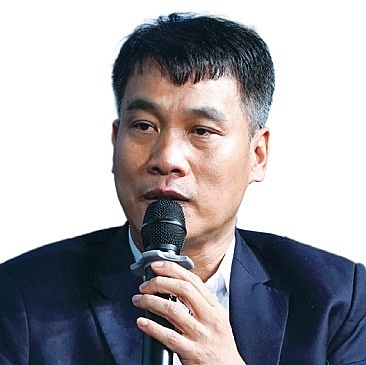Nation missing out on sports gold mine
 |
| More professional sports can help boost tourism, services, and even sportswear manufacturing, Photo: Topas Vietnam |
Speaking at the Vietnam Sport Economy Summit 2023 taking place in Hanoi last weekend, vice president of the VnExpress Marathon organising committee Le Van Anh said that a marathon held in Hue in April attracted 10,500 runners.
In just three days, the event brought Thua Thien-Hue province about 33,000 tourists with revenues of about $2.4 million, a rise of 1.5 times compared to last season and nearly double compared to 2020.
“The goal of the marathons is not only to bring runners to experience a new land, but also to stimulate tourism demand and develop the local economy through the race,” said Van Anh. “After the first season in 2019, we expanded the league to five different cities. This year, it will be present in seven localities, contributing to spreading the image of the nation to many domestic and international tourists,” she added.
Along with marathons, other sports which are favoured in the country such as volleyball, basketball, football, golf, and chess, could become a new “gold mine” for the Vietnamese economy if properly exploited and developed, industry leaders said.
Dang Ha Viet, chairman of the Vietnam Sports Administration (VSA), said each year Vietnam organises 40,000 sports tournaments from amateur to professional level.
“Athletics events including running, long-distance swimming, and triathlons often attract tens of thousands of participants and create great economic value. The revenue from the sports tournaments comes from ticket sales, television broadcasting rights and tournament organisation, and sponsorship advertising and services, including sports betting,” Viet said. “Our country’s sports economy market is worth about $300 million and it has a lot of room for development.”
Reaching new revenues
The Asia-Pacific region is considered a leading region in terms of sporting economic growth, at an average of 9.4 per cent per year, higher than both the Unied States and Europe. However, related activities in Vietnam are still in a state of hibernation and waiting for investment and exploration prospects.
According to statistics from the Ministry of Culture, Sports and Tourism (MoCST), the state budget for sports in the period 2011-2020 reached nearly $2.5 billion, equivalent to 0.46 per cent of total expenditure. On average each year, Vietnam spends about $240 million on developing sports activities, but its contribution to the GDP structure is less than 1 per cent.
In comparison, the budget spent on tourism promotion activities is about $2 million per year, but contributed up to 6.6 per cent of GDP by the end of last year.
However, the sport economy has become an important sector of the economic system in many countries, and can make important contributions to the budget.
Figures from Statista.com show that the US has the largest source of sports revenue in the world, accounting for 3.2 per cent of GDP and standing in 11th place compared to other industries. The size of the US sports sponsorship market is predicted to grow to $112.2 billion by 2030 from $64.8 billion in 2021.
In China, total revenues from sports accounts for 2.3 per cent of GDP, mainly coming from its sports lottery.
“Many baseball competitions, rugby leagues, basketball, and major football leagues have revenues of over $5 billion, of which revenues from television rights accounts for 50-70 per cent. Vietnam has only a few smaller-scale competitions, such as the football V-League and the Vietnam Basketball Association (VBA). They get revenues from sponsorship and TV rights, but only at a peak of around $2.5 million per season,” said Viet of the VSA.
Tran Chu Sa, COO of the VBA, said that professional basketball has been present in Vietnam for more than 10 years, but it is still fairly unpopular. Since its inception, the VBA’s challenge has been to continuously build new content, increase entertainment in tournaments to reach a wider audience, and at the same time convert new customers to loyal one.
“Several years ago, the conversion rate from new viewers to VBA fans was about 25 per cent. This rate has increased by around two per cent currently, but the association still aims to continue to increase the number of conversions to 6-7 per cent,” Sa said.
“Every step has its own difficulties. Today’s tournaments not only compete in terms of expertise, favourite audience. or international tournaments, but also face competition from attractive and easily accessible entertainment content such as music, movies, shopping, and especially esports,” Sa added.
The key lies in policy
The sports economy is not a new concept in Vietnam; a resolution issued in 2005 provided directions to promote private investment engagement in this field. However, today the market is still tiny because sport is still mainly considered simply a social activity.
In the draft master plan for the country to 2030, with a vision to 2050, issued by the MoCST in 2021, the sports economy was mentioned for the first time as a declaration of the government of Vietnam’s serious interest in harnessing the economic power of sport.
But to realise the ambition is deemed tough because policy barriers are currently weak points in terms of attracting a finance stream and developing infrastructure.
“Development and construction of sports facilities require large capital, but investment procedures and processes in the sports field are still limited. The Law on Public-Private Partnership Investment is not yet applied in culture and sports,” said president of Vietnam Sports Platform Lim Song, a South Korean investor with 13 years of experience in sports in Vietnam.
Song said that South Korea’s sports economic development since hosting the Olympics in 1988 could help Vietnam. From an underdeveloped economy, the value of the South Korean sports industry is currently $54 billion, and the goal is to increase it to $75 billion by 2027.
“The government of South Korea has made sport one of the economic pillars and has since built institutions, regulations, and legal corridors to promote the development of the sports industry. South Korea also set up two sports betting companies, and all profits will be invested back into sports,” he shared.
“My advice to Vietnam is to rethink the policies, create a balance in sports, and turn more amateur tournaments into professional ones.”
In addition to reinvestment activities, Nguyen Tra Giang, vice president of the Vietnam Chess Federation, said that Vietnam can learn from Thailand, a neighbour with a thriving sports economy, in optimal exploitation of relevant infrastructure.
For example, the SEA Games athletes’ village in Thailand, although built 20 years ago, is still in good operation and is being used as a hotel for athletes and additional services for teams to train.
“The system of sports facilities in Thailand is well invested and maintained. Most of these facilities will be used for free in the afternoons, but the latter benefit is a stimulus to sports-related economic sectors such as the apparel, fashion, and utility industry development,” Giang said.
| Vietnam Sport Economy Summit 2023 |
| Nguyen Manh Hung - Deputy director of Social Affairs Central Economic Commission
Neighbouring countries like China have implemented sports economic policies since 1994, and some other countries in Southeast Asia such as Malaysia, Singapore, and Thailand have developed robust sports economies. Vietnam has potential for the development and business of sports services. Although not considered an economic sector, sports business activities are well-developed in Vietnam with the participation of many domestic and foreign businesses with a variety of sports goods and services. With the right policies, in the near future, Vietnam can become a manufacturing powerhouse for sporting goods, which is a premise to build a brand for Vietnamese sports. However, to be successful, Vietnam needs to come up with level policies, encouraging and promoting investment in the development of production and trading of sports goods, and related human resource development. We expect new directions could bring the sports economy to contribute about 2 per cent to Vietnam’s GDP each year and can increase to 5-6 per cent in the future. David Lloyd - Director Topas Vietnam Trail Series
We began our races because of our passion for mountain running and we continue to do it in the north because we love these areas. Economically however , it made sense as Sapa is the home of Topas. Our races have undoubtedly had a large positive impact on the tourism economy in the areas where we operate. On race weekend we bring thousands of runners and their supporters to these regions, which clearly gives a direct economic boost. However, the impact spreads far wider and over a longer period of time. Our races raise the tourism profiles of these areas, particularly Pu Luong and Moc Chau. The races introduce many people to these areas for the first time. It is very complicated to measure the economic impact this marketing reach has on these areas, but we are confident we have had a large positive impact on Thanh Hoa, Son La, and Lao Cai. We have around 11,000 runners across three races and we’ve given over $400,000 to charity. We are fortunate to receive strong support from the authorities everywhere we organise events – they are interested in promoting their provinces and our races do that very effectively. As long as we work in a responsible, professional manner ensuring the safety of our runners, the authorities are happy to support us. Every race comes with challenges, but with our strong, experienced core management and crew and excellent local partners, we can overcome the obstacles we face. Dang Ha Viet - Chairman Vietnam Sports Administration
The biggest bottleneck for the development of the sports economy at the current time is the policy mechanisms related to facilities. Developed countries, when planning residential areas, always reserve an area of land used for sports business activities, so that people have a place to practice sports. Football is the most popular sport in Vietnam, but all facilities are currently under the management of the state. We are in the trend of public investment and private management, but it is very difficult to implement. Professional clubs without a field and facilities will never develop a sports business because the revenue from the football field is considerable. Another source of income for the sports economy is the revenue from the sale of competitions. In addition to some sold-out tournaments, most events in Vietnam currently only stop at finding first, second, and third-place teams and looking for athletes with good expertise. Currently, there are no investors and a lack of interest from the organisers in entertainment to attract viewers, so there is almost no revenue from such events. In addition, the issue of tournaments and also television rights is of great value, but the sports industry does not have specific regulations on television management. Nguyen Manh Hung - General secretary Vietnam Athletics Federation
Vietnam holds about 50 marathons and half-marathons every year, not counting smaller events. Each major tournament will have more than 10,000 participants. With numerous participants, sponsors can share outfits and shoes for participating groups to expand product advertising through a tournament. Runners often choose destinations with beautiful scenery to both travel and participate in competitions. Therefore, many localities are now focusing on organising races to promote tourism development. Running competitions have become a promotional brand of the provinces, especially those with slow economic development such as Hau Giang, Quang Ngai, Ha Giang, and Cao Bang. In 2017, the Vietnam Athletics Federation cooperated with Ha Giang province to organise its first half-marathon, attracting the participation of nearly 500 runners. After the success of the first year, the number of runners participating in the marathon there in the following years has reached 2,000 people, bringing great tourism revenue to the province. We aim to develop instructional exercises to draw running enthusiasts in the long term. We are also developing standards for competitions to ensure health and security requirements, and to limit risks. Le Tri Truong - General secretary Vietnam Volleyball Federation
In volleyball thus far, sponsorship has mainly come from personal relationships, from an individual or a unit that loves volleyball. The competitions are also mainly for the purpose of recruiting talent and improving professional quality. Only a few events that have commercial value and entice audiences can sell television rights and sell tickets to the audience with accompanying products and services. Since 2015, the federation has been gradually changing to make the tournaments more attractive. We also calculate the match time suitable for the audience to watch live as well as via television. We organise seminars to build a system that is scientific and attracts a large audience. We also reduced the number of teams and transfer in foreign players to increase attractiveness. The federation wants to switch to a league format, but considering the current situation, there are still many difficulties in financial conditions at the clubs. Only 10-20 per cent of volleyball teams belong to enterprises, and the rest still operate on the budget of the state, departments, and agencies. If switching to a league format like football, volleyball teams will have to play weekly, resulting in travel and accommodation costs and this is difficult for teams. Nguyen Quang Huy - Store leader Decathlon Hanoi
In Vietnam, we have been present since 1995 but only at the stage of production and sales. The retail system has only been in operation here for four years, but it is still mainly in the state of market exploration, with the two largest stores in Southeast Asia in Hanoi and Ho Chi Minh City. This year, we will open three more large stores in Hanoi. We aim to produce sportswear for groups of people who participate in many different sports at many levels. Decathlon has also participated in many events such as the Vietnam Mountain Marathon in Sapa or running in Pu Luong of Thanh Hoa province. Businesses will receive many benefits if the market develops and becomes more exciting. In addition to play sports as an experience, Decathlon also wishes to help participants enjoy and love sport. We also have our own policy of cooperating with businesses to support and coordinate with event organisers to promote the development of Vietnamese sports. |
What the stars mean:
★ Poor ★ ★ Promising ★★★ Good ★★★★ Very good ★★★★★ Exceptional
 Tag:
Tag:
Related Contents
Latest News
More News
- Businesses ramp up production as year-end orders surge (December 30, 2025 | 10:05)
- Vietjet chairwoman awarded Labour Hero title (December 29, 2025 | 13:06)
- How to unlock ESG value through green innovation (December 29, 2025 | 10:03)
- AI reshapes media and advertising industry (December 29, 2025 | 08:33)
- FPT and GELEX sign deal to develop blockchain tech for global markets (December 29, 2025 | 08:29)
- Vietnam’s GDP forecast to grow by 9 per cent in 2026 (December 29, 2025 | 08:29)
- Women entrepreneurs are key to Vietnam’s economic growth (December 29, 2025 | 08:00)
- Vietnam's top 500 value-creating enterprises announced (December 27, 2025 | 08:00)
- The PAN Group shaping a better future with ESG strategy (December 26, 2025 | 09:00)
- Masan Consumer officially lists on HSX, marking the next phase of value creation (December 25, 2025 | 13:20)





























 Mobile Version
Mobile Version